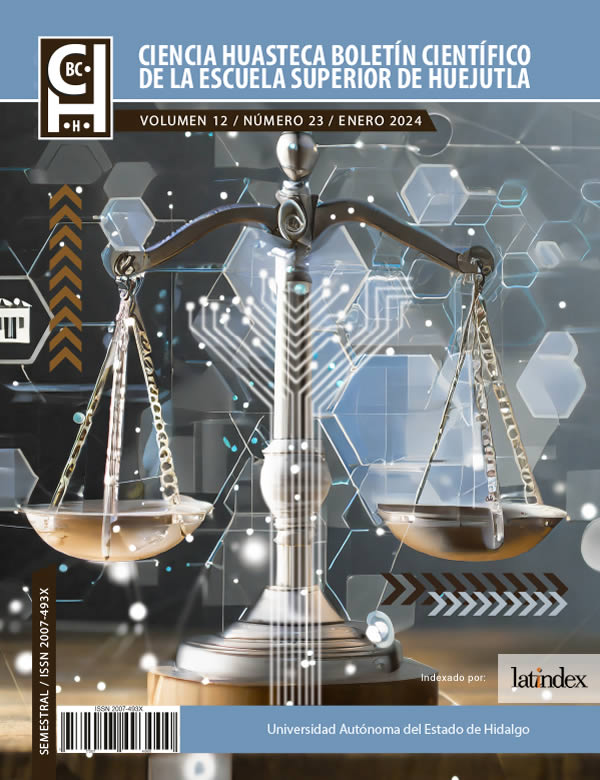Implementation of a non-invasive electronic device for glucose level determination in humans
Abstract
Currently, there are invasive devices for taking blood glucose samples, which cause pain and discomfort in patients; in addition, when performing the puncture for blood sampling, it compromises the hygiene of the procedure. The device is based on the design of the optical receiver, which contains two IR diodes that function as emitter and receiver. When the infrared light emitted by the emitter passes through the human tissue, information on the glucose levels in the blood can be obtained with a margin of error of ±10% in relation to invasive devices. The data obtained by the device are displayed on an LCD screen, and sent to a mobile application where the information obtained is displayed, it also has a solar panel that serves to increase the battery usage of the device, which makes it independent. Several tests were performed with the designed device as well as with the traditional glucometer (Yuwell, model 710), for a correct validation 24 patients between young and adults were used, among them are healthy people and others suffering from diabetes; the results obtained show us that the implemented device has a percentage error of 6.96%, compared to the invasive glucometer. According to ISO 15197:2015, 95% of the measured glucose values must be within an error range of ±15 mg/dl with respect to the average of the measurements obtained with a reference procedure when dealing with blood glucose concentrations lower than 100 mg/dl; indicating that the data obtained by the implemented device are within the range of the standard. The design of a non-invasive glucometer, which has a wireless connection, facilitated sample collection, preventing the patient from going through stress and anxiety, which causes an erroneous result in the sample obtained.
Downloads
References
Anupongongarch, P., Kaewgun, T., & O'reilly, J. (2022). Diseño y construcción de una sangre no invasiva medidor de glucosa. Revista internacional de ingeniería biomédica aplicada, 13(2), 36-40. Retrieved from https://ph04.tci-thaijo.org/index.php/jcst/article/view/327
Albuja Chaves , M., & Vera Alcívar, D. (2021). Perfil clínico de pacientes antes y después de un programa de reversión de diabetes en ecuador. Revista de la facultad de medicina humana, 22(1), 148. Retrieved from https://dx.doi.org/10.25176/rfmh.v22i1.4339
Ayala Baño, E. P., & Miño Altamirano , D. I. (2022, 03). Universidad Técnica De Ambato. Retrieved 06 21, 2022, from https://repositorio.uta.edu.ec/jspui/handle/123456789/35090
Bentabol Brinkmann, M. D. (2020, 09). Universidad De Málaga. Retrieved 06 21, 2022, from https://riuma.uma.es/xmlui/handle/10630/23461
Castro Pimentel, L., K. Hernández, F., Guerra Alvarado, O., & Téllez Anguiano, A. (2019, noviembre). Non-invasive glucose measurement using spectrography in near infrared (nir). Ieee latin america transactions, 17(11), 7. Retrieved from https://latamt.ieeer9.org/index.php/transactions/article/download/297/323/39679
Giménez, Ó. (2017). ISO 15197:2015, la norma de la comisión europea que exige una mayor precisión a los sistemas de monitorización de glucosa en sangre. El farmacéutico(552), 20. Retrieved from https://www.elfarmaceutico.es/uploads/s1/18/02/ef552-legislacion-iso.pdf
L. Castro-Pimentel, A. T.-A.-A. (2019). Non-invasive glucose measurement using spectrography in near infrared (nir). 17(11), 1754-1760. Doi:10.1109/tla.2019.8986412
Luque, R. G. (2021, 06 24). Universidad De Málaga. Retrieved 06 21, 2022, from https://hdl.handle.net/10630/20221
Miranda Rodríguez, A. M. (2019, 02 26). Universidad Distrital Francisco José De Caldas. Retrieved 08 23, 2022, from http://hdl.handle.net/11349/14819
Rodas Torres, W. P., Mawyin Juez, A. E., Gómez González, J. L., Rodríguez Barzola, C. V., Serrano Vélez, D. G., Rodríguez Torres, D. A., . . . Montes Nájera, R. D. (2018). Diabetes gestacional: fisiopatología, diagnóstico, tratamiento y nuevas perspectivas. Avft, 37(3), 221. Retrieved from https://www.redalyc.org/articulo.oa?id=55963208008
Srivastava, A., Chowdhury, M., Sharma, S., & Sharma, N. (2013). In-vitro measurement of glucose concentration in human blood plasma mixed intralipid phantom samples by using modulated ultrasound and infrared light. Br. Biotechnol, 13(1), 1-6.
Copyright (c) 2023 Wendy Jahaira Moposita Saquinga, Jefferson Alexander Moposita Saquinga

This work is licensed under a Creative Commons Attribution-NonCommercial-NoDerivatives 4.0 International License.









